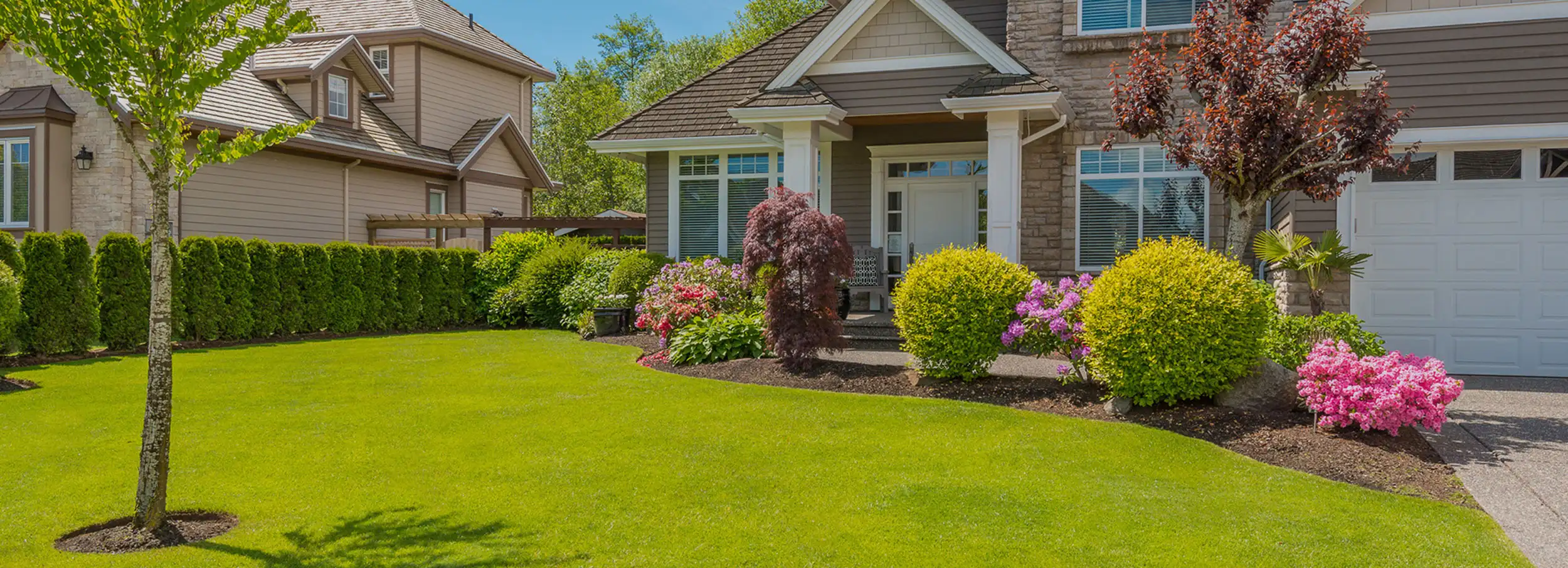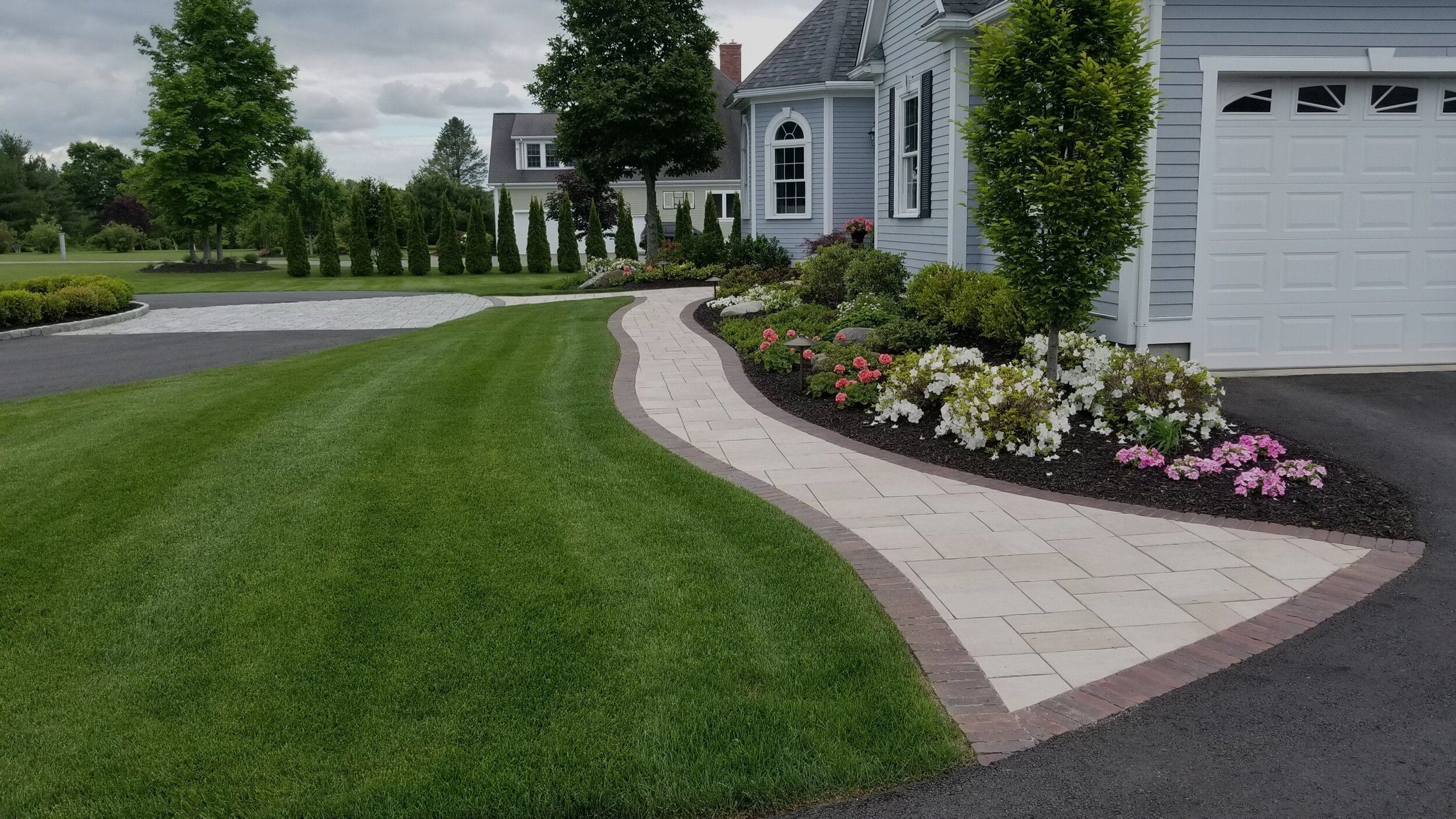Premier Landscaping Company Jacksonville: Exceptional Providers for Beautiful Gardens
Premier Landscaping Company Jacksonville: Exceptional Providers for Beautiful Gardens
Blog Article
Elevate Your Property's Visual With Lasting Landscaping Styles and Eco-Friendly Practices

Benefits of Sustainable Landscaping
Applying sustainable landscaping techniques not only preserves natural resources yet likewise promotes biodiversity and boosts general ecological health. One significant advantage is the decrease of water usage with the usage of drought-resistant plants, rainfall gardens, and effective irrigation systems.
Moreover, sustainable landscaping can enhance soil health by decreasing making use of chemical fertilizers and chemicals, consequently producing a healthier atmosphere for plant growth and beneficial dirt organisms. This, in turn, boosts the overall strength of the landscape to endure ecological stressors and climate modification impacts - landscaping contractor Jacksonville. Furthermore, lasting landscape design practices can bring in varied wildlife, including pollinators like butterflies and bees, cultivating a much more balanced and dynamic ecological community within the building
Incorporating Indigenous Plants
To build on the benefits of lasting landscaping, a tactical focus on integrating indigenous plants can additionally boost eco-friendly resilience and promote biodiversity within the landscape. Native plants are species that naturally occur in a particular area and have developed to flourish in the regional environment, dirt problems, and ecological community. By including native plants in landscaping designs, building proprietors can reduce water usage, minimize the need for chemical pesticides and fertilizers, and support the local wild animals population.
Integrating native plants likewise aids in maintaining the unique character and identification of an area's vegetation. These plants often call for much less maintenance as soon as developed, making them a affordable and sustainable landscaping solution in the lengthy run. Furthermore, native plants can attract indigenous pollinators like and butterflies, adding to the general health and wellness of the ecological community.
When picking indigenous plants for landscape design jobs, it is necessary to pick species that are fit to the details ecological problems of the website. Consulting with regional nurseries or arboretums can give useful assistance on selecting the right native plants for a specific area. By integrating indigenous plants into landscaping layouts, homeowner can produce gorgeous, lasting outdoor areas that profit both the area and the environment.

Water Conservation Methods
Effective watering methods play an important duty in sustainable landscaping techniques, guaranteeing ideal water preservation initiatives in exterior rooms. Implementing go to this web-site methods such as drip irrigation, rainwater harvesting, and wise watering systems can substantially reduce water wastage while preserving a healthy landscape. Drip irrigation provides water straight to the origins of plants, lessening dissipation and drainage. Rain gathering includes accumulating rainwater from roofings and saving it for later usage in watering, reducing the reliance on municipal water resources. Smart watering systems use climate information and soil wetness levels to change watering timetables, protecting against overwatering and advertising water efficiency.
Along with advanced irrigation approaches, xeriscaping is another water-saving landscape design technique that focuses on making use of drought-resistant plants, compost, and effective irrigation to create a low-water landscape layout - bush removal Jacksonville. By selecting indigenous plants that are appropriate to the neighborhood climate and soil problems, go to my blog homeowner can reduce the demand for excessive watering, inevitably conserving water and promoting a sustainable outside setting
Eco-Friendly Hardscaping Concepts
Enhancing exterior spaces with environmentally friendly hardscaping functions can add considerably to sustainable landscaping methods. Choose for materials like recovered timber, recycled concrete, or all-natural rock to minimize environmental impact when thinking about hardscaping aspects. These materials not only add a special aesthetic attract your exterior room yet also reduce the need for new resources extraction.
Carrying out absorptive paving choices such as crushed rock or absorptive concrete can aid lower water runoff and advertise groundwater recharge. These options permit rainwater to leak right into the ground, preventing erosion and decreasing the concern on stormwater systems.
Integrating indigenous plants into hardscaping designs can even more enhance eco-friendliness by supporting local wild animals and lowering the need for too much watering or chemical therapies. By integrating environment-friendly wall surfaces or vertical yards, you can present extra plants right into city setups, improving air high quality and biodiversity.
Incorporating energy-efficient lights, such as solar-powered LEDs, right into hardscaping designs can decrease electricity consumption and lower your building's carbon impact. Focusing on eco-friendly hardscaping click here for more info concepts not only boosts the charm of your exterior room but likewise shows a commitment to environmental stewardship.
Upkeep Tips for Lasting Landscapes

Frequently trim plants to promote healthy and balanced growth and protect against overgrowth that can lead to pest diseases or infestations. Use natural fertilizers to nourish the soil and plants without unsafe chemicals that can leach into the setting.
Conclusion
In conclusion, sustainable landscape design practices use various advantages for home proprietors, from enhancing the aesthetic charm of the environments to promoting ecological preservation. By incorporating native plants, carrying out water preservation strategies, and utilizing environmentally friendly hardscaping ideas, homeowner can create stunning landscapes that are likewise eco liable. With appropriate upkeep, sustainable landscapes can grow and add to a healthier environment for both humans and wildlife.
In addition, sustainable landscaping can enhance dirt health and wellness by reducing the use of chemical fertilizers and chemicals, therefore producing a healthier setting for plant growth and useful dirt microorganisms.To build upon the advantages of lasting landscaping, a critical focus on incorporating indigenous plants can even more enhance environmental resilience and advertise biodiversity within the landscape. By including indigenous plants in landscaping layouts, property proprietors can decrease water use, lessen the need for chemical pesticides and plant foods, and support the regional wildlife populace.
These plants typically call for much less upkeep when established, making them a lasting and economical landscaping remedy in the long run. By incorporating native plants into landscape design designs, building proprietors can create beautiful, sustainable outdoor rooms that benefit both the setting and the community.
Report this page